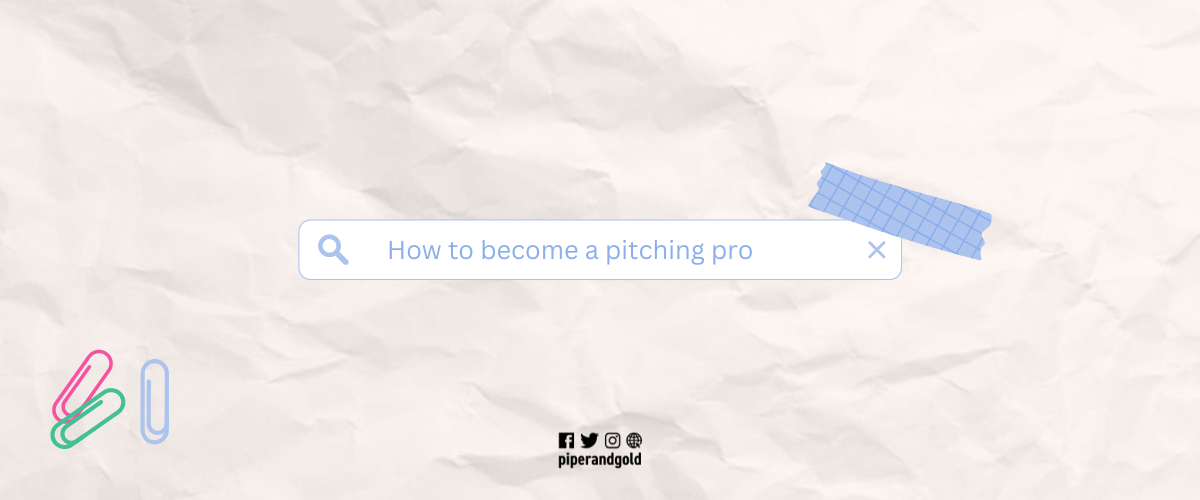
From Reporter to Pitching Pro: Q&A with P&G’s Media Relations Specialist Kristin Nill
Jun 2, 2023
Category: PR strategy
Services: Media Relations
Picture this: You’re sitting at your desk, laptop open, finalizing the pitch you have constructed for one of your top clients, hoping the media will want an interview. This is what a typical day looks like for Kristin Nill, our media relations specialist. As an essential part of public relations, media is crucial to elevate awareness and increase public perception. I sat down with Kristin to discuss her insight and expertise in pitching and reporting. Here’s what she had to say…
P&G: Public relations is a fast-growing industry. How has the field changed since you’ve been working in it?
Kristin Nill: It’s changed in a lot of ways. When I started, TikTok didn’t exist, now it's another resource for us to know what’s happening in the world. We’re constantly being fed information because there’s more ways than ever to receive it, and it’s changing all the time. Podcasts existed when I started, but they weren’t as popular. Now, you have a podcast for every topic imaginable.
P&G: As a media relations professional you’re building relationships with the public for clients all the time, but how do you build relationships with reporters to get media coverage?
KN: It’s just like any relationship — things take time. It’s important to remember reporters and journalists are people too. The biggest thing is to connect with them authentically. Don’t always reach out with the expectation of seeking something in return. If they’ve covered something really sad or serious, check on them and send them an email telling them you’re thinking about them. If they wrote an article you really like, compliment them on it. Don’t forget to thank them for talking to your client. Your goal is to build that relationship. Over time, they’ll remember you and build mutual trust with you and your clients.
P&G: What skills did you acquire as a reporter that were transferable to the public relations industry? Why are these skills necessary or helpful?
KN: I wasn’t a reporter for very long but having that experience helped me understand their day-to-day. I understand what they’re going through and the types of deadlines they have. There’s also the storytelling aspect — why is this news? Why should the reporter or the outlet care about this?
P&G: What is your modern take on a press release? Do you believe they’re as effective as they used to be?
KN: I’m of the mindset that releases aren’t as effective or as needed as they used to be. But there are times when releases carry value. If you’re announcing an acquisition or you won a prestigious award, then, yes, write a press release. But, for the most part, they’re not needed. As a reporter, I never read a news release. If a reporter reads a release, they’re most likely reading the headline and maybe the first paragraph. They’ll know within five seconds if it’s something they want to pursue. If it is, they’ll keep reading, reach out to you or share it on their website. In general, I think we’re better off sending pitches to the media with the key information they need to know.
P&G: What is your biggest tip or strategy on how to pitch or get the media’s attention?
KN: Quality over quantity. Always. Ensure you do your best to have updated information on who you’re emailing. If you have an education story, make sure you’re taking it to the education reporter or the next best person. There will be times when you can’t find a specific beat reporter, so you may have to play a little bit of a guessing game — do the best you can to find the right person. It helps if you can research some of the stories they’ve covered in the past. Customizing pitches is also great, but it’s not going to make or break a pitch. At the end of the day, the most important thing is that your pitch has all the information as concisely as possible and it’s going to the right person at the right time.
P&G: What does “spray and pray” mean in media relations?
KN: It means sending your press release to every single media outlet in a market regardless of what they cover. It’s something I think a lot of PR professionals try to avoid doing and if they aren’t avoiding it, they should. Sending a release or pitch to a bunch of outlets without vetting them doesn’t make sense if they don’t cover your topic — they’re not going to respond and you’re going to end up wasting your time. I’ve preached this before, but quality contacts are far more important. Media relations is an art, not a science, but spray and pray is more of a mess than art.
P&G: For students and anyone entering the industry as a practitioner, what advice or tips do you have for getting started and finding what you like doing?
KN: Don’t be afraid to get out of your comfort zone to try new things that scare you. You truly don’t know what you like and what you enjoy until you actually get out there and do it. Be a sponge, soak up as much as you can.
Kristin developed a passion for the media while attending Grand Valley State University where she received a bachelor’s degree in broadcasting. Eager to start her post-grad career, Kristin secured a position as a reporter for KXII News in Sherman, Texas. After her time in front of the camera, Kristin moved behind the scenes. Throughout Kristin’s media relations career, she has received notable hits from top outlets such as The Today Show, Rolling Stone, Inside Edition, Forbes, The Washington Post and Bloomberg. P&G is proud to have such an accomplished professional working alongside our clients as a media relations specialist.



